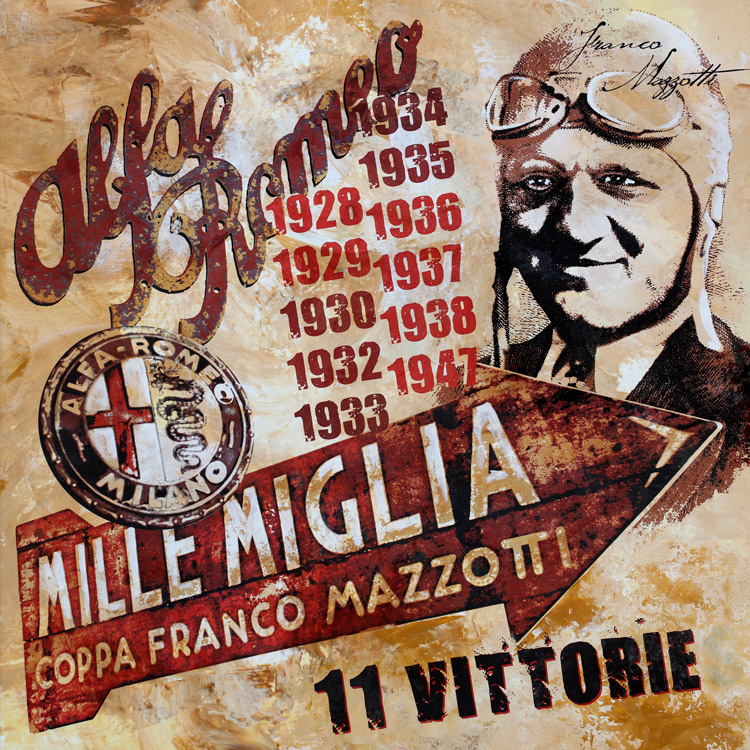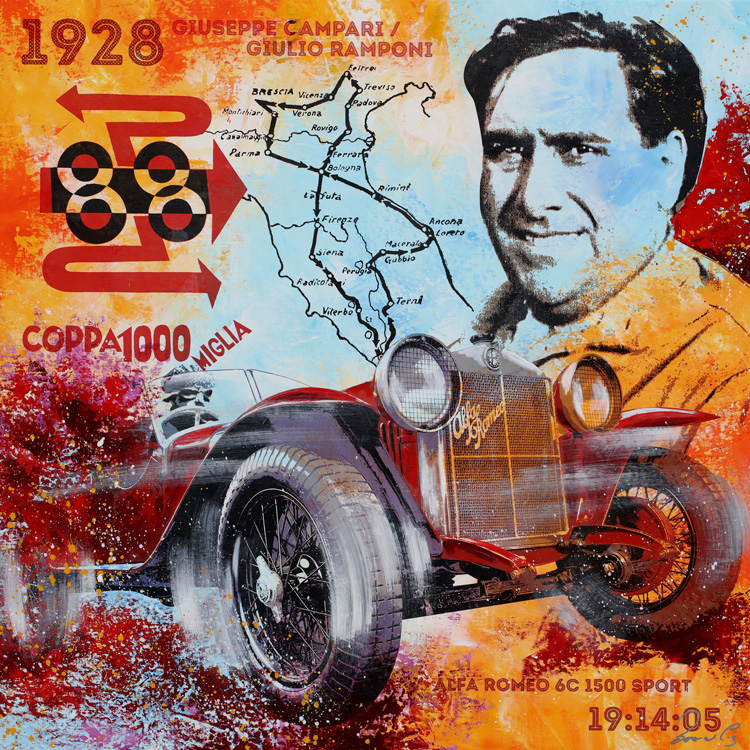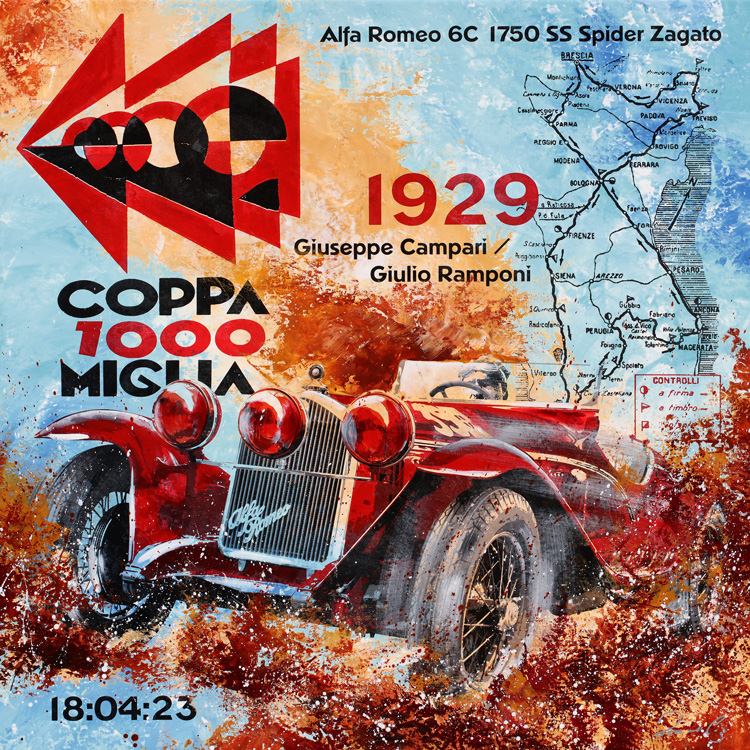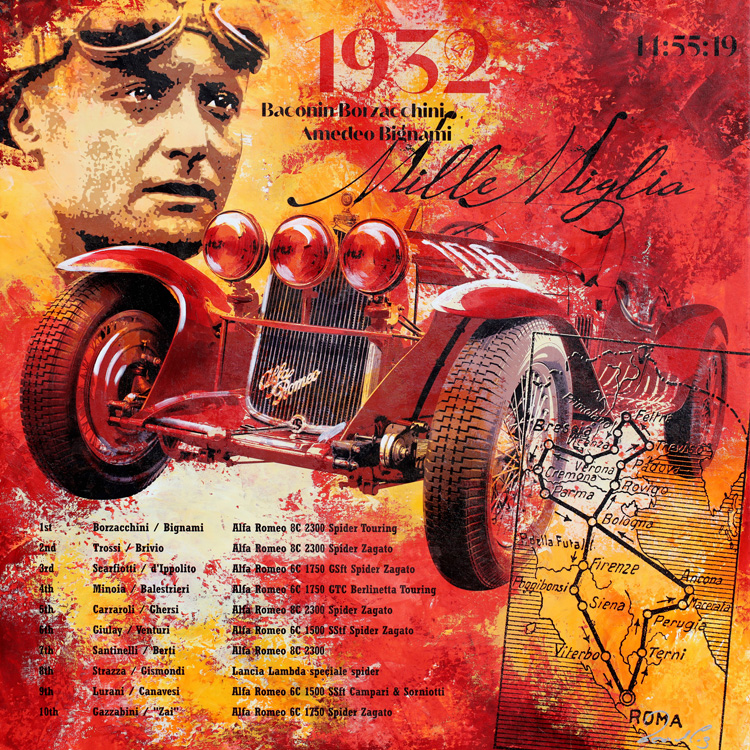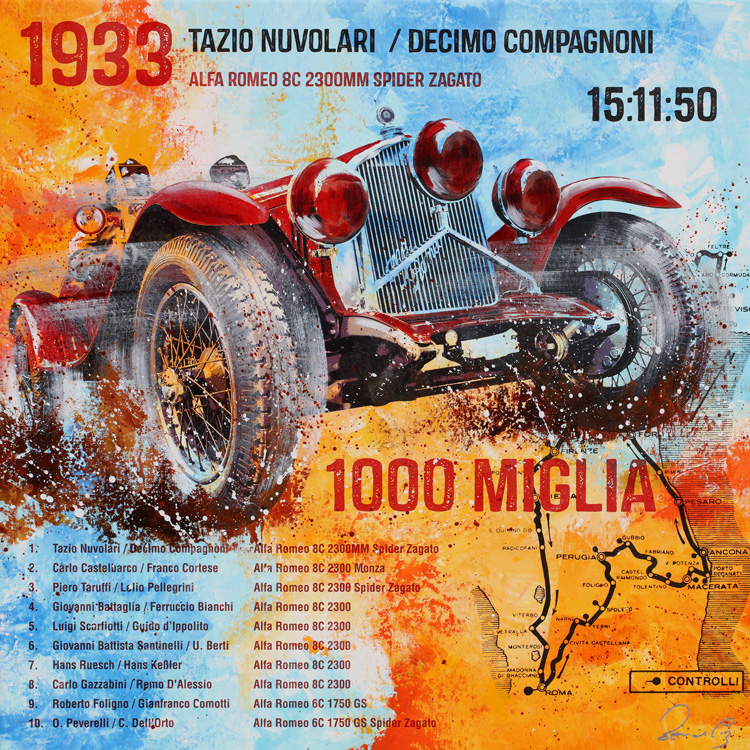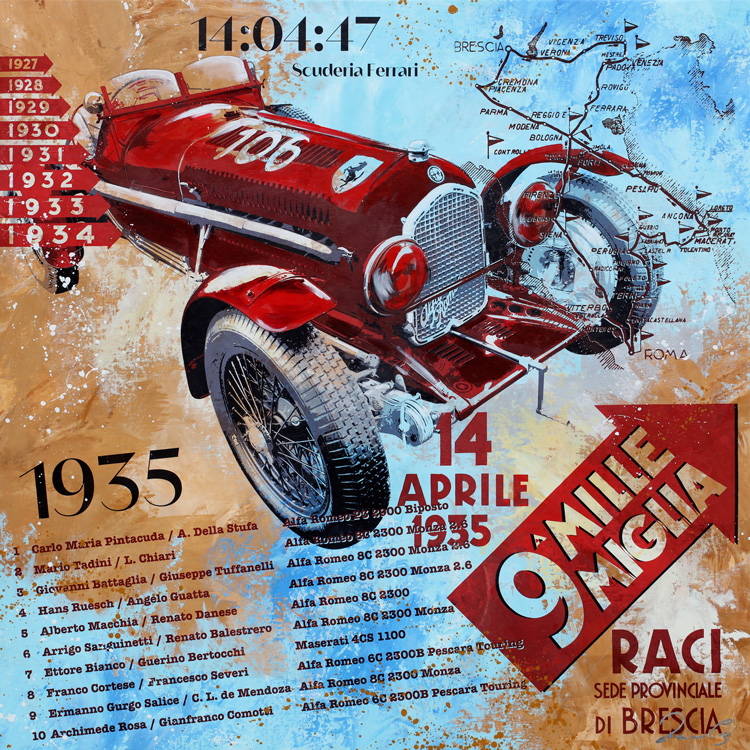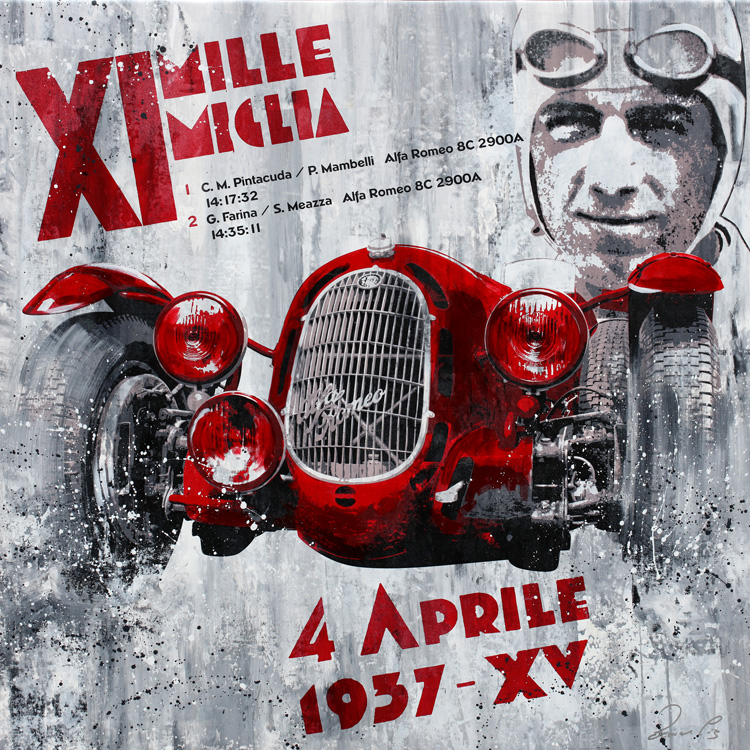The first Italian Grand Prix was held at the Circuito di Montichiari in Brescia in 1921, but was then moved to Monza. In 1925, four sports car enthusiasts from Brescia, Count Franco Mazzotti, Count Aymo Maggi, Renzo Castagneto and Giovanni Canestrini set themselves the task of making their home town a center of motorsport again with a big car race. It was supposed to be a road race, mostly over unpaved country roads, starting and ending in Brescia. As route length
was about 1600 kilometers or 1000 English miles –
the unit in which the “ancient Romans” had already measured.
Two years after the beginning of the considerations, the starting shot was fired in Brescia on March 26, 1927 for 77 cars. An OM from Brescia won the premiere of the race. Even today, an OM always has the starting number 1 in the historic edition of the race.
The Mille Miglia was part of the 1953 World Sports Car Championship.

